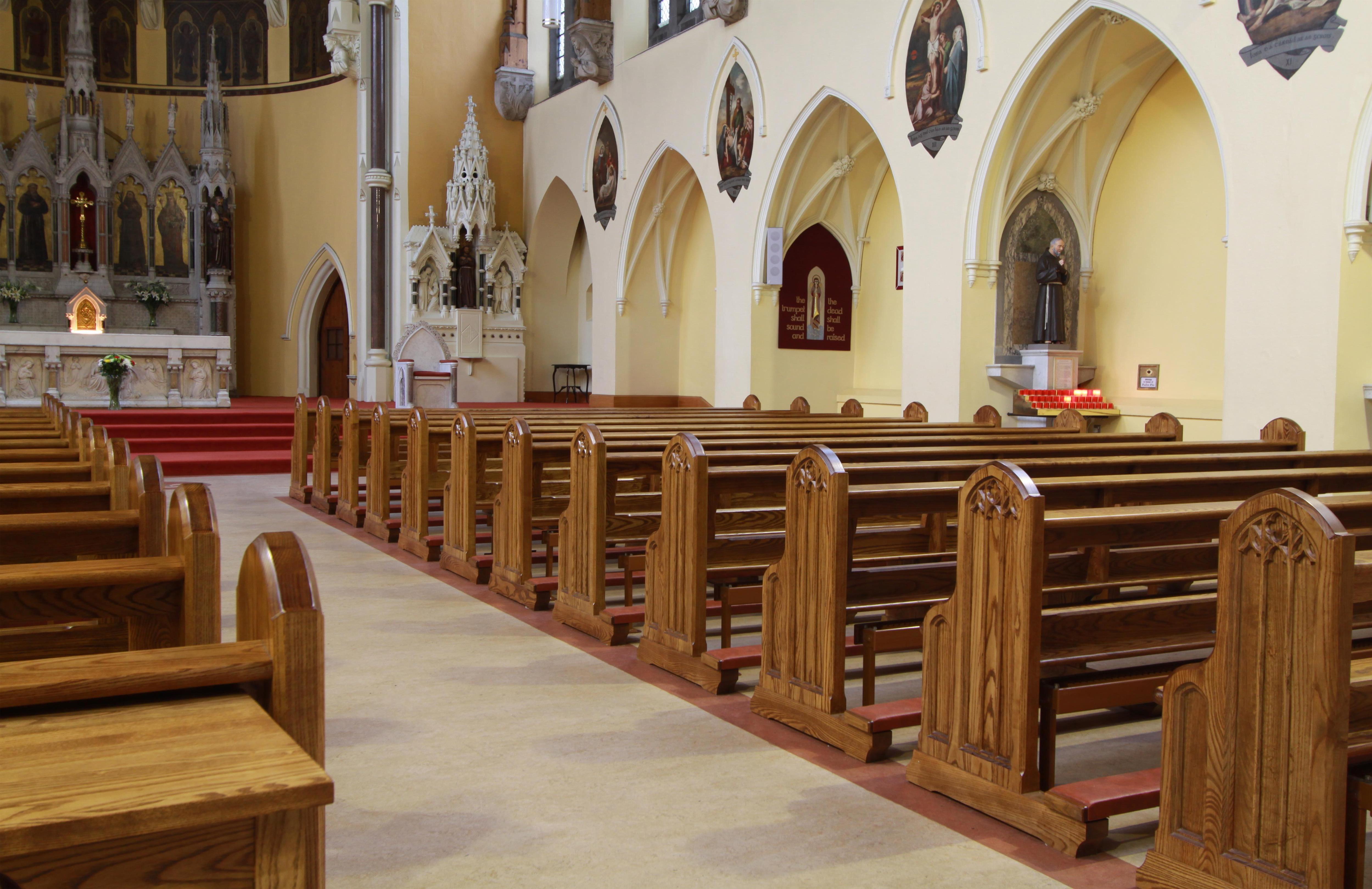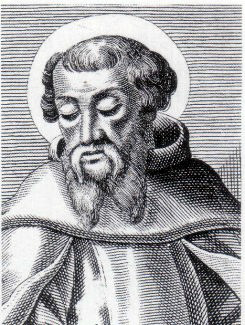|
St Iberius' Church
St. Iberius' Church ( ) is an 18th-century Protestant church in the centre of Wexford, Ireland, dedicated to Saint Ibar of Beggerin (Iberius). Designed by John Roberts (architect), John Roberts, the interior is Georgian architecture, Georgian in style, while the exterior is Renaissance Revival architecture, Renaissance Revival. It is a Record of Protected Structures, protected structure. Building history It is believed that there was an earlier (Pre-Reformation Catholic) church on the site dedicated to local saint Ibar of Beggerin. The current building is believed to date from some time after the Restoration in Ireland, Restoration of Charles II of England, King Charles II in 1660. In 1690, the Rector of St Iberius, Alexander Allen, accused then Mayor of Wexford, Edward Wiseman, of inciting vandals to demolish the altar and pews and steal vestments and books. St. Iberius' was rebuilt in 1760–66 to a Georgian architecture, Georgian style. A cast iron bell in the church is da ... [...More Info...] [...Related Items...] OR: [Wikipedia] [Google] [Baidu] |
Wexford
Wexford ( ; archaic Yola dialect, Yola: ''Weiseforthe'') is the county town of County Wexford, Republic of Ireland, Ireland. Wexford lies on the south side of Wexford Harbour, the estuary of the River Slaney near the southeastern corner of the Ireland, island of Ireland. The town is linked to Dublin by the N11 road (Ireland), M11/N11 Roads in Ireland#National Primary Routes, National Primary Route; and to Rosslare Europort, Cork (city), Cork and Waterford by the N25 road (Ireland), N25. The rail transport in Ireland, national rail network connects it to Dublin and Rosslare Europort. It had a population of 21,524 according to the 2022 census of Ireland, 2022 census. History The town was founded by the Vikings in about 800 AD. They named it ''Veisafjǫrðr'', meaning "inlet of the mudflats". In medieval times, the town was known as ''Weiseforthe'' in the Yola dialect of Middle English. This, in turn became "Wexford" in modern English. According to a story recorded in the ''dind ... [...More Info...] [...Related Items...] OR: [Wikipedia] [Google] [Baidu] |
Lead
Lead () is a chemical element; it has Chemical symbol, symbol Pb (from Latin ) and atomic number 82. It is a Heavy metal (elements), heavy metal that is density, denser than most common materials. Lead is Mohs scale, soft and Ductility, malleable, and also has a relatively low melting point. When freshly cut, lead is a shiny gray with a hint of blue. It tarnishes to a dull gray color when exposed to air. Lead has the highest atomic number of any stable nuclide, stable element and three of its isotopes are endpoints of major nuclear decay chains of heavier elements. Lead is a relatively unreactive post-transition metal. Its weak metallic character is illustrated by its Amphoterism, amphoteric nature; lead and lead oxides react with acids and base (chemistry), bases, and it tends to form covalent bonds. Lead compounds, Compounds of lead are usually found in the +2 oxidation state rather than the +4 state common with lighter members of the carbon group. Exceptions are mostly limited ... [...More Info...] [...Related Items...] OR: [Wikipedia] [Google] [Baidu] |
Vestments
Vestments are liturgical garments and articles associated primarily with the Christian religion, especially by Eastern Churches, Catholics (of all rites), Lutherans, and Anglicans. Many other groups also make use of liturgical garments; among the Reformed (Calvinist) Churches this was a point of controversy in the Protestant Reformation and sometimes since, in particular during the ritualist controversies in the Church of England in the 19th century. Origins In the early Christian churches, officers and leaders, like their congregations, wore the normal dress of civil life in the Greco-Roman world, although with an expectation that the clothing should be clean and pure during holy observances. From the 4th century onward, however, modifications began to be made to the form of the garments, and, as secular fashions changed from the 6th century, the church retained the original forms of their garments, although with separate development and with regional variations. Having ... [...More Info...] [...Related Items...] OR: [Wikipedia] [Google] [Baidu] |
Pews
A pew () is a long bench seat or enclosed box, used for seating members of a congregation or choir in a synagogue, church, funeral home or sometimes a courtroom. Occasionally, they are also found in live performance venues (such as the Ryman Auditorium in Nashville, which was formerly a church). In Christian churches of the Roman Catholic, Lutheran, and Anglican traditions, kneelers are an essential part of the pew, that are used during various parts of the liturgy. Overview The first backless stone benches began to appear in English churches in the thirteenth century, originally placed against the walls of the nave. Over time, they were brought into the centre of the room, first as moveable furniture and later fixed to the floor. Wooden benches replaced the stone ones from the fourteenth century and became common in the fifteenth. Churches were not commonly furnished with permanent pews before the Protestant Reformation. The rise of the sermon as a central act of Christia ... [...More Info...] [...Related Items...] OR: [Wikipedia] [Google] [Baidu] |
Altar
An altar is a table or platform for the presentation of religion, religious offerings, for sacrifices, or for other ritualistic purposes. Altars are found at shrines, temples, Church (building), churches, and other places of worship. They are used particularly in Christianity, Buddhism, Hinduism, and modern paganism. Many historical-medieval faiths also made use of them, including the Religion in ancient Rome, Roman, Religion in ancient Greece, Greek, and Norse paganism, Norse religions. Etymology The modern English language, English word ''wikt:altar#English, altar'' was derived from Middle English ''wikt:alter#Latin, altar'', from Old English ''wikt:alter, alter'', taken from Latin ''wikt:altare#Latin, altare'' ("altar"), probably related to ''wikt:adolere#Etymology 2, adolere'' ("burn"); thus "burning place", influenced by ''wikt:altus#Latin, altus'' ("high"). It displaced the native Old English word ''wikt:weofod#Old English, wēofod''. Altars in antiquity In antiquity, alta ... [...More Info...] [...Related Items...] OR: [Wikipedia] [Google] [Baidu] |
Charles II Of England
Charles II (29 May 1630 – 6 February 1685) was King of Scotland from 1649 until 1651 and King of England, Scotland, and King of Ireland, Ireland from the 1660 Restoration of the monarchy until his death in 1685. Charles II was the eldest surviving child of Charles I of England, Scotland and Ireland and Henrietta Maria of France. After Charles I's execution at Palace of Whitehall, Whitehall on 30 January 1649, at the climax of the English Civil War, the Parliament of Scotland proclaimed Charles II king on 5 February 1649. However, England entered the period known as the English Interregnum or the English Commonwealth with a republican government eventually led by Oliver Cromwell. Cromwell defeated Charles II at the Battle of Worcester on 3 September 1651, and Charles Escape of Charles II, fled to mainland Europe. Cromwell became Lord Protector of England, Scotland and Ireland. Charles spent the next nine years in exile in France, the Dutch Republic and the Spanish Netherlands. ... [...More Info...] [...Related Items...] OR: [Wikipedia] [Google] [Baidu] |
Restoration In Ireland
The Restoration () of the Monarchy of Ireland began in 1660. The Commonwealth of England, Scotland and Ireland (1649–1660) resulted from the Wars of the Three Kingdoms but collapsed in 1659. Politicians such as General Monck tried to ensure a peaceful transition of government from the "Commonwealth" republic back to monarchy. From 1 May 1660 the English, Scottish and Irish monarchies were all restored under King Charles II. The term ''Restoration'' may apply both to the actual event by which the monarchy was restored, and to the period immediately before and after the event. End of the republic With the collapse of The Protectorate in England during May 1659 the republic which had been forced upon Ireland by Oliver Cromwell quickly began to unravel. Royalists planned an uprising in Ireland and sought to turn Henry Cromwell and Lord Broghill (who was in contact with the King's court in the summer of 1659) towards the cause but the plan came to naught. Henry Cromwell left I ... [...More Info...] [...Related Items...] OR: [Wikipedia] [Google] [Baidu] |
Pre-Reformation Catholic
The history of the Catholic Church is the formation, events, and historical development of the Catholic Church through time. According to the tradition of the Catholic Church, it started from the day of Pentecost at the upper room of Jerusalem; the Catholic tradition considers that the Church is a continuation of the early Christian community established by the Disciples of Jesus. The Church considers its bishops to be the successors to Jesus's apostles and the Church's leader, the Bishop of Rome (also known as the Pope), to be the sole successor to St Peter who ministered in Rome in the first century AD after his appointment by Jesus as head of the Church.Hitchcock, ''Geography of Religion'' (2004), p. 281, quote: "Some (Christian communities) had been evangelized by Peter, the disciple Jesus designated as the founder of His church. Once the position was institutionalized, historians looked back and recognized Peter as the first pope of the Christian church in Rome"Norman, ... [...More Info...] [...Related Items...] OR: [Wikipedia] [Google] [Baidu] |
Main Street, Wexford By Lawrence Studios (7438815092)
Main may refer to: Geography *Main River (other), multiple rivers with the same name *Ma'in, an ancient kingdom in modern-day Yemen *Main, Iran, a village in Fars Province *Spanish Main, the Caribbean coasts of mainland Spanish territories in the 16th and 17th centuries *''The Main'', the diverse core running through Montreal, Quebec, Canada, also separating the Two Solitudes *Main (lunar crater), located near the north pole of the Moon *Main (Martian crater) People and organizations *Main (surname), a list of people with this family name *Main, alternate spelling for the Minaeans, an ancient people of modern-day Yemen *Main (band), a British ambient band formed in 1991 *Chas. T. Main, an American engineering and hydroelectric company founded in 1893 *MAIN (Mountain Area Information Network), former operator of WPVM-LP (MAIN-FM) in Asheville, North Carolina, U.S. *Main Deli Steak House ("The Main"), a smoked-meat delicatessen in Montreal, Quebec, Canada Ships * ''Ma ... [...More Info...] [...Related Items...] OR: [Wikipedia] [Google] [Baidu] |
Record Of Protected Structures
Conservation in the Republic of Ireland is overseen by a number of statutory and non-governmental agencies, including those with responsibility for Historic preservation, conservation of the built environment and Environmental protection, conservation of the natural environment in Ireland. Conservation has sometimes been a contentious issue, with debates impacting its progress since the 1960s. Concrete initiatives are sometimes driven by European Union (EU) heritage protection and environmental policies, including EU environmental law, which – as a member – the Irish government is obliged to adopt and implement. Heritage conservation Heritage conservation has been in place in Ireland since the formation as the state, with structures protected under local, national and international legislation. National legislation In the 1930s, a national policy was adopted in the form of the National monument (Ireland), National Monuments Act, which established preservation orders, listed ... [...More Info...] [...Related Items...] OR: [Wikipedia] [Google] [Baidu] |
Protestant
Protestantism is a branch of Christianity that emphasizes Justification (theology), justification of sinners Sola fide, through faith alone, the teaching that Salvation in Christianity, salvation comes by unmerited Grace in Christianity, divine grace, the priesthood of all believers, and the Bible as the sole infallible source of authority for Christian faith and practice. The five solae, five ''solae'' summarize the basic theological beliefs of mainstream Protestantism. Protestants follow the theological tenets of the Reformation, Protestant Reformation, a movement that began in the 16th century with the goal of reforming the Catholic Church from perceived Criticism of the Catholic Church, errors, abuses, and discrepancies. The Reformation began in the Holy Roman Empire in 1517, when Martin Luther published his ''Ninety-five Theses'' as a reaction against abuses in the sale of indulgences by the Catholic Church, which purported to offer the remission of the Purgatory, temporal ... [...More Info...] [...Related Items...] OR: [Wikipedia] [Google] [Baidu] |








